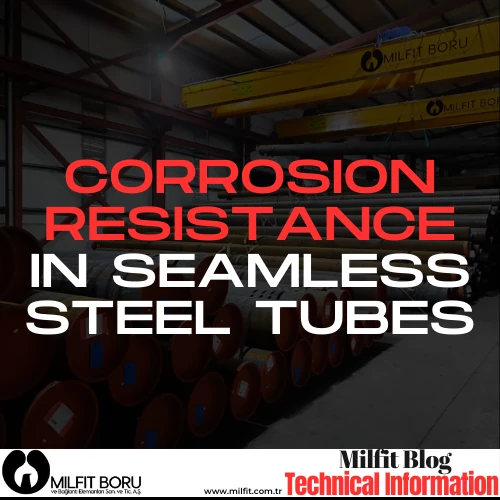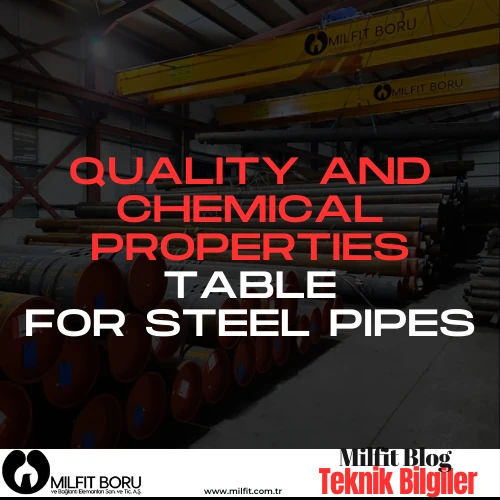Corrosion resistance is a vital characteristic of seamless steel drawn tubes, as it determines their ability to withstand corrosion in various environments. By understanding the factors influencing corrosion and

“Technical Information on Seamless Steel Pipes: Unlocking the Engineering Insights
Welcome to our comprehensive guide on technical information about seamless steel pipes! Seamless steel pipes are not just ordinary components; they embody a wealth of engineering knowledge and technical details that contribute to their exceptional performance. Our dedicated category page on technical information about seamless steel pipes is your ultimate resource to explore the intricate details and gain valuable insights into these remarkable pipes.
Within our informative category page, you’ll find a wealth of technical information covering various aspects of seamless steel pipes. From material composition and mechanical properties to manufacturing processes, heat treatment methods, and corrosion resistance, we delve deep into the technicalities that make seamless steel pipes an engineering marvel.
Explore our collection of articles, guides, and visual resources to gain insights into the factors that impact the selection, design, and installation of seamless steel pipes. Learn about the considerations for different applications, the effects of temperature and pressure, and the importance of proper maintenance and inspection.
Whether you’re an engineer, designer, or industry professional seeking to expand your technical knowledge or a curious individual fascinated by the science behind seamless steel pipes, our user-friendly category page is here to support you.
Explore our technical information on seamless steel pipes category now and unlock the engineering insights that will enhance your understanding of these exceptional pipes and their applications.”

Corrosion resistance is a vital characteristic of seamless steel drawn tubes, as it determines their ability to withstand corrosion in various environments. By understanding the factors influencing corrosion and

“Steel pipes are manufactured according to various international standards, each specifying specific requirements and characteristics. However, navigating through the multitude of standards can be a daunting task for engineers, manufacturers, and professionals working

Quality and Chemical Properties Table for Steel Pipes “Steel pipes are widely used in various industries due to their durability, strength, and versatility. However, not all steel pipes are created equal. The quality and
Seamless pipes, as the name suggests, are pipes without any welded joints or seams. They are manufactured through a process known as seamless tube manufacturing, which involves the extrusion
Normalization is a heat treatment process commonly employed in the steel industry to enhance the mechanical properties and refine the microstructure of steel. This comprehensive guide delves into the details of normalization in steel, including the process, benefits, applications,
Electric Resistance Welding (ERW), Submerged Arc Welding (SAW), Gas Metal Arc Welding (GMAW/MIG), and Tungsten Inert Gas Welding (GTAW/TIG) are among the common welding processes used for seamless
Quality Control and Testing Processes play a vital role in ensuring the integrity, reliability, and performance of seamless steel drawn tubes. From the inspection of incoming raw materials to the rigorous testing of
DIN (Deutsches Institut für Normung), which stands for the German Institute for Standardization, is a prominent organization that has a significant impact on international standards. Established in 1917, DIN plays a crucial role in the development, implementation, and improvement
Hydrostatic pressure testing is a crucial process for ensuring the structural integrity, reliability, and safety of components and systems operating under pressure. By subjecting objects to controlled fluid pressure,
Ultrasonic Testing is a proven and effective method for detecting flaws in seamless steel drawn pipes. By understanding the principles, equipment, and techniques involved in this non-destructive testing method,
Magnetic particle inspection is a valuable technique for detecting defects in seamless steel drawn tubes. Understanding the principles, applications, and limitations of this method is crucial for professionals and
Understanding the key concepts in the steel industry provides a solid foundation for comprehending its processes, products, and applications. By familiarizing themselves with the raw materials, steel grades,
Non-destructive testing, mechanical properties testing, dimensional analysis, chemical analysis, pressure testing, visual inspection, and certification requirements collectively contribute to ensuring the integrity and
A Steel Pipe Wall Thickness Table is a crucial reference tool when working with steel pipes. This table provides valuable information about the thickness of the pipe walls for different sizes and types of steel pipes. It serves as a guide for engineers, designers, and manufacturers,
A Steel Pipe Material Comparison Table (DIN EN ASME) is an invaluable resource when it comes to understanding and comparing different materials used in steel pipes. This table provides a comprehensive overview of the material equivalences between the DIN, EN,
There are different tools that can be used for this purpose, including calipers and micrometers. In this section, we will explain how to measure the diameter and wall thickness of steel pipes using these tools.
Here are two common measuring instruments used for measuring
Each chemical element is represented by a unique symbol, often derived from its name or Latin terminology. The use of symbols allows for a concise representation of the elements present in a steel alloy, enabling
Steel is a versatile and widely used material that plays a crucial role in various industries and applications. In this article, we will delve into the world of steel, exploring its composition, properties,
In the realm of steel pipes, seamless steel pipes have gained immense popularity due to their exceptional characteristics and wide range of applications. In this article, we will delve into the advantages of seamless steel pipes, exploring their unique features, performance benefits,
Request a Quote for our Products
Subscribe to our Newsletter
Follow us on our social media accounts